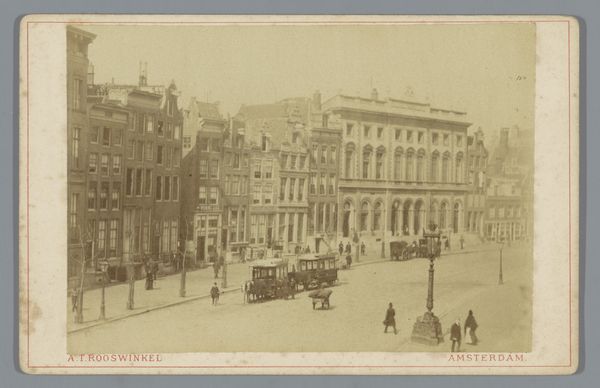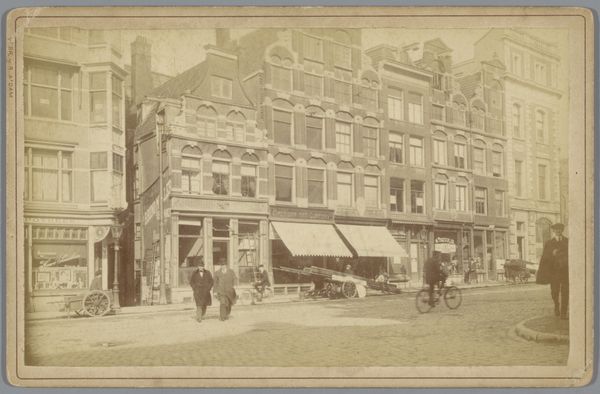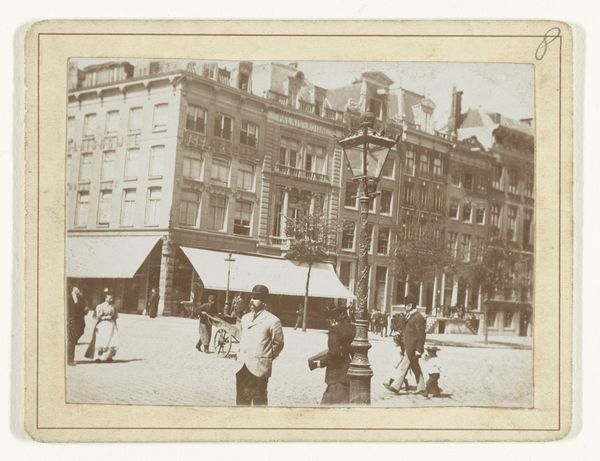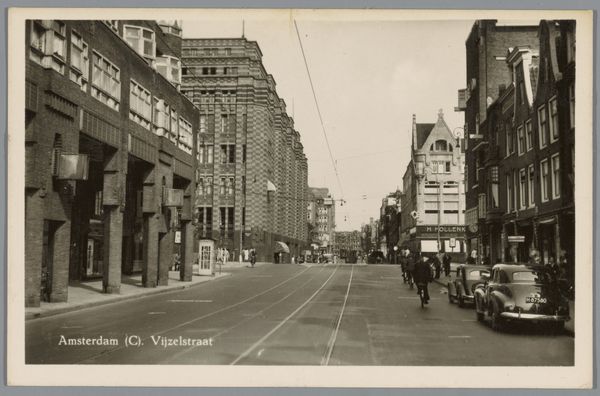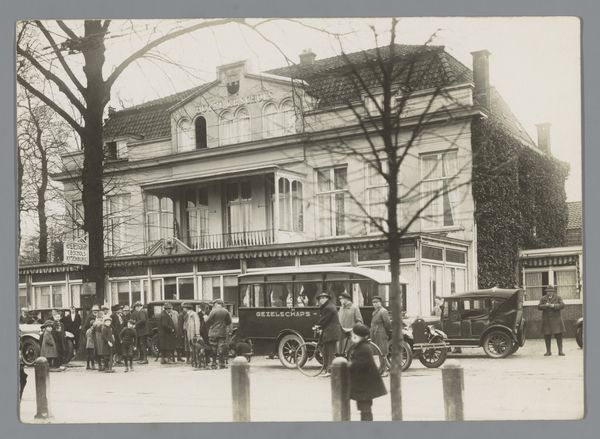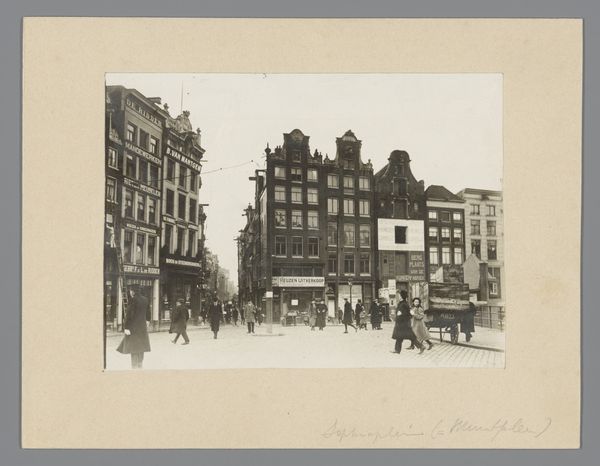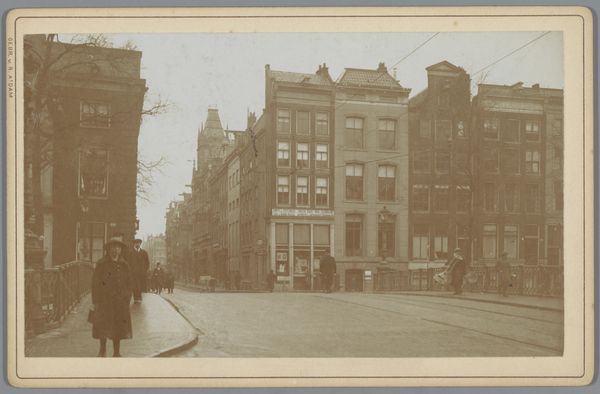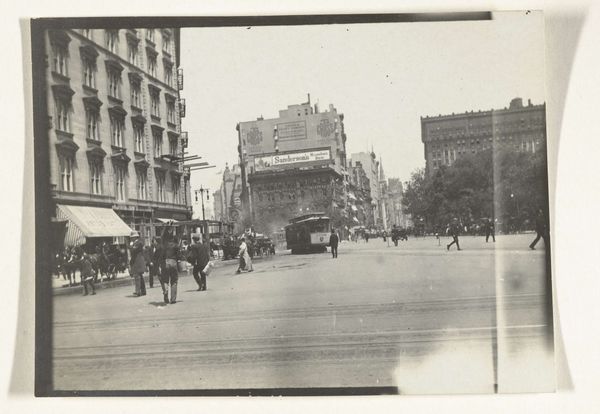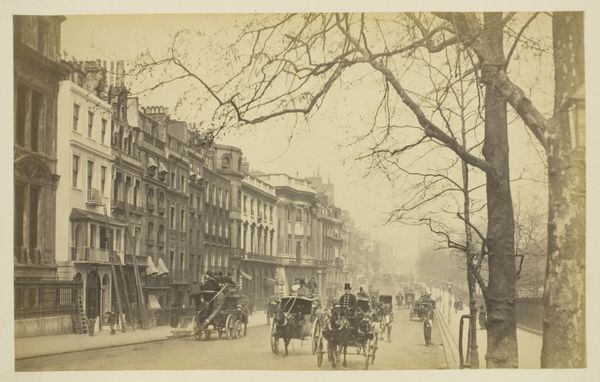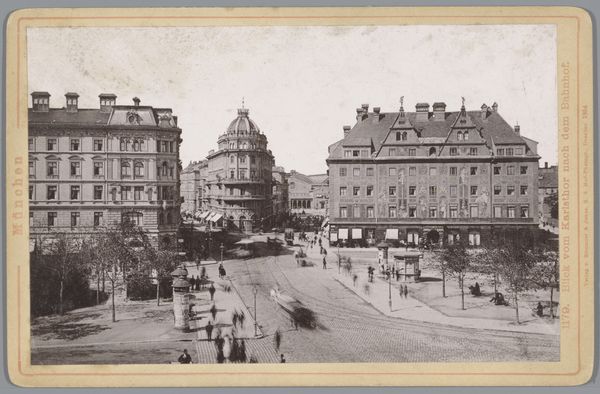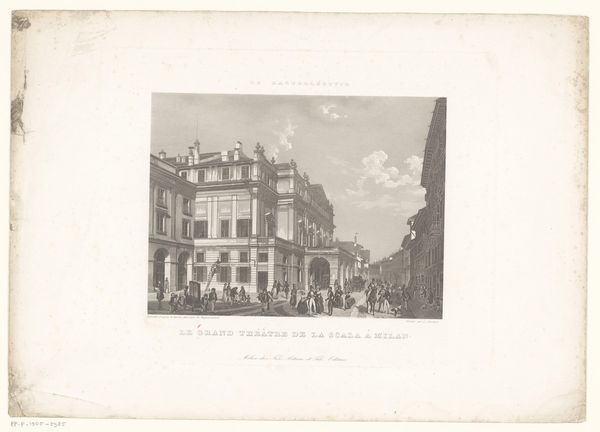
print, paper, photography, albumen-print
#
aged paper
#
paper non-digital material
# print
#
paper
#
street-photography
#
photography
#
cityscape
#
albumen-print
Dimensions: height 183 mm, width 120 mm, width 240 mm, thickness 4 mm
Copyright: Rijks Museum: Open Domain
Curator: Ah, here we have "Album met voorstellingen van Parijs," a captivating photographic print created by Jan Petrus Ponstijn, likely sometime between 1920 and 1940. Editor: The scene is compelling, bathed in soft sepia tones. The verticality of the archway is particularly dominant, yet there is dynamism in the arrangement. Curator: The composition showcases the iconic Parisian cityscape, centered around an elaborate archway. We have a snapshot into Parisian society through its built environment, captured through the emerging medium of photographic documentation. What commentary might this work offer us? Editor: The tonal range creates an evocative, almost melancholic feel. The vehicles, while dated, are given volume from the interplay of light, particularly on the cars positioned on the street level. We could explore the artist's decision to exclude a focus of human presence to highlight the scene’s spatial elements. Curator: It also calls attention to urban planning and infrastructure, with its depiction of public transit and thoroughfares. One must question what visual culture influenced Ponstijn’s subject-centered photographic practice, given how photography served in France. This city itself functioned as a focal point in early forms of print culture. Editor: I agree the work seems intended to capture a modern world of transportation and a classical architecture. As an artistic choice, it works, giving equal consideration to forms across the historical divide. I am most drawn to its presentation and tactile characteristics as a product; the material quality of aged paper adds a crucial layer of historical authenticity. Curator: Considering its placement in an album, how would our interpretations shift if the photographer meant to engage themes of memory through preservation, which could imply a personalized element with an individual's recollections of a historical location, like Paris? Editor: Certainly, context enriches the analysis. It's precisely how formal elements can resonate with lived experience. In a single, considered frame we can see much of Parisian aesthetic priorities throughout its transformation during the interwar period. Curator: It's the details—both captured within the photograph and inherent to its form as print material—that really give a richer understanding of its time.
Comments
No comments
Be the first to comment and join the conversation on the ultimate creative platform.

